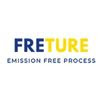Check valves play a crucial role in various industrial applications, ensuring fluid flows in one direction while preventing backflow. To guarantee their optimal performance and longevity, proper installation, testing, and maintenance are paramount. In this comprehensive guide, we will delve into step-by-step procedures for installing, testing, and maintaining Check valves, with a focus on sealing, cavitation reduction, and overall performance optimization.
I. Installation Procedures:
Selecting the Right Valve:
- Understand the specific requirements of your system and choose a Check valve that suits the application.
- Consider factors such as pressure rating, temperature, material compatibility, and the type of fluid being transported.
Proper Valve Orientation:
- Install the Check valve in the correct orientation to ensure it functions as intended.
- Verify the arrow on the valve body indicating the direction of flow matches the system's flow direction.
Pipeline Preparation:
- Thoroughly clean the pipeline before installation to prevent debris from entering the valve.
- Ensure that the pipe ends are cut squarely to avoid misalignment issues.
Flange Alignment:
- Align the flanges precisely during installation to prevent stress on the valve body.
- Tighten bolts gradually and uniformly to maintain proper alignment.
II. Testing Procedures:
- Sealing Verification:
- Conduct a pressure test to verify the Check valve's sealing capabilities.
- Monitor for any leaks or anomalies, addressing them promptly.
Cavitation Prevention:
- Evaluate the potential for cavitation by considering flow rates and pressure differentials.
- Implement measures such as adding throttling devices or installing anti-cavitation trim.
Backflow Prevention:
- Simulate backflow conditions to ensure the valve effectively prevents reverse flow.
- Adjust settings or replace the valve if backflow occurs.
Functional Testing:
- Conduct functional tests under actual operating conditions.
- Monitor for any irregularities in valve opening and closing, addressing issues promptly.
III. Maintenance Best Practices:
- Regular Inspection:
- Establish a routine inspection schedule to identify signs of wear, corrosion, or damage.
- Inspect the valve body, disc, and sealing surfaces for any abnormalities.
Lubrication:
- Apply appropriate lubrication to moving parts to ensure smooth operation.
- Follow manufacturer recommendations for lubricant type and application intervals.
Cleaning Procedures:
- Periodically clean the valve internals to remove accumulated debris.
- Pay attention to the disc and seating surfaces to maintain proper sealing.
- Replacement of Worn Parts:
- Replace worn-out components promptly to prevent degradation in performance.
- Keep a stock of spare parts to facilitate quick replacements when necessary.
Conclusion:
Implementing proper Check valve installation, testing, and maintenance procedures is crucial for ensuring the reliability and longevity of these essential components in fluid systems. By adhering to the outlined best practices, industries can mitigate the risk of issues such as cavitation, improve sealing capabilities, and optimize overall performance. A commitment to proactive care and attention to detail will contribute to the seamless operation of Check valves, safeguarding the integrity of industrial processes.





.gif)


